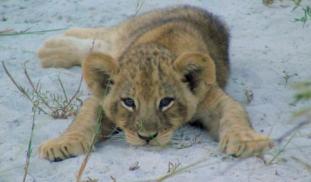Please wait...
About This Project
CLAWS Conservancy
Lions and people live a tenuous coexistence. When lions kill livestock, villagers retaliate with poison, which indiscriminately removes lions and other wildlife. Through Pride in Our Prides, communities have named local lions and followed their daily habits to learn their individual stories. Through satellite tracking, we also provide early-warnings via text when lions approach the village. So far, this system has successfully protected livestock and lions while halting the use of poison.

Browse Other Projects on Experiment
Related Projects
How do polar bears stay healthy on the world's worst diet?
Polar bears survive almost entirely on seal fat. Yet unlike humans who eat high-fat diets, polar bears never...
Uncovering hidden insect diversity associated with a likely undescribed gall-forming midge
Does a likely undescribed species of gall-forming midge (pers. comm. Ray Gagné) on Eriodictyon plants (Yerba...
Macrofungi of the California archipelago
The eight islands of the California Archipelago are a well-studied biodiversity hotspot — but we know almost...




